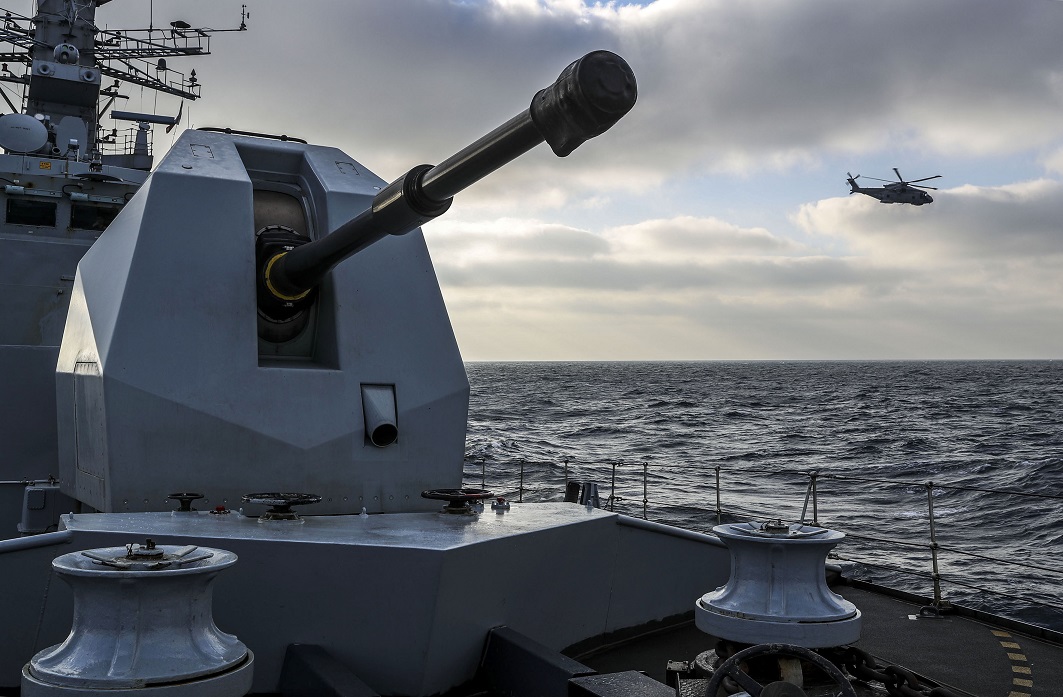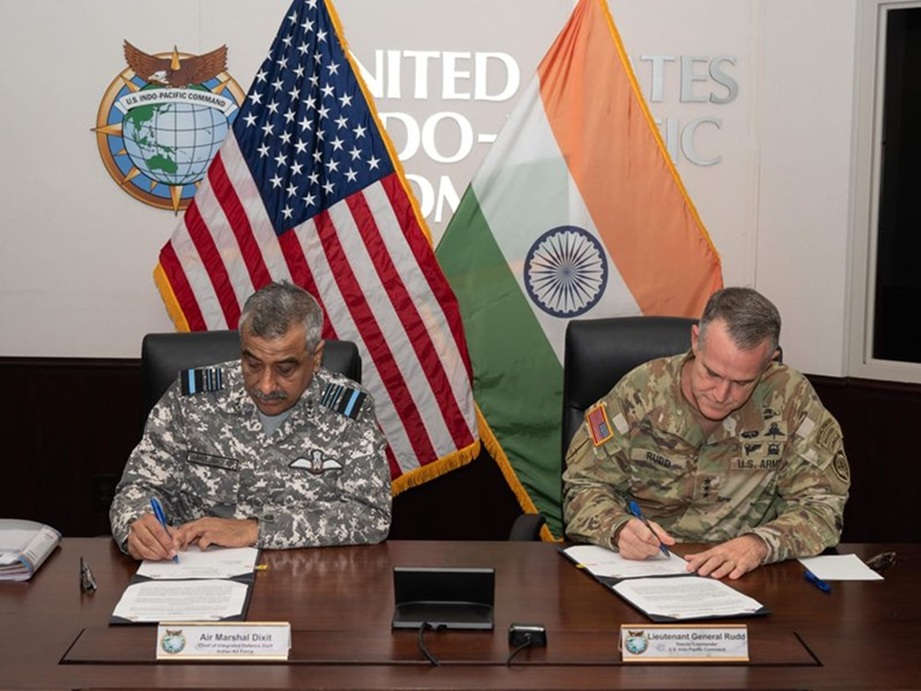In part 2 the developments in armament technology and the evolution of gunnery tactics between the fifteenth and early twentieth century was covered. In part 3, the developments in technology and their impact on naval armament during the two World Wars will be covered.
The Dreadnought Era and the World Wars – Age of the All Big Gun Battleship
The significant developments in gunnery in the 19th century culminated in the launch of the revolutionary all big gun HMS Dreadnought in 1906, the first modern battleship, which was armed with ten 12-inch guns. In less than 100 years, naval ships of the line had gone from the first simple iron-clads to modern battleships. H.M.S. Dreadnought displaced 17,900 tons, was 527 feet long, and 82 feet at the beam. She carried ten 12-inch guns, twenty-seven 12 pounders, and five 18-inch torpedo tubes. Powered by 23,000 horsepower engines, she could make 21 knots. The battleship soon took on the mantle as the arbiter of sea power. However, technological developments would ensure that in less than three decades, the battleship would become obsolete and by the end of the second Word War, the concept of big gun battleship would also lose its relevance to the aircraft carrier in naval battlespace.
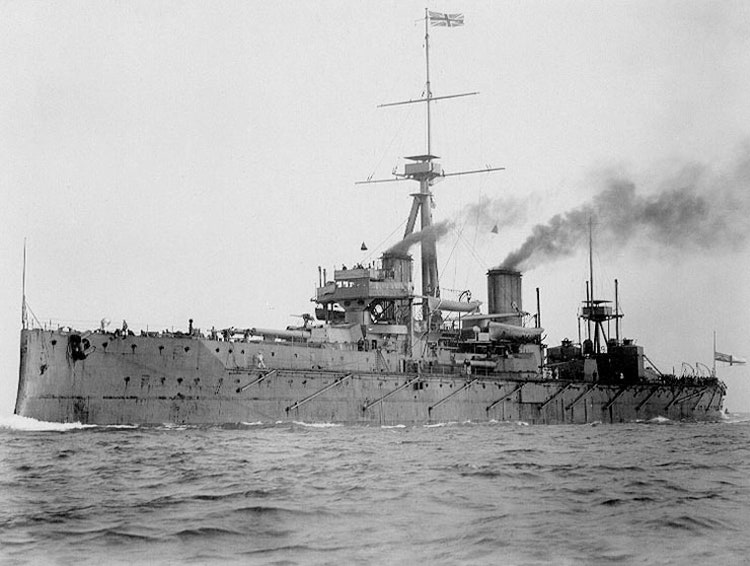
One of the striking changes brought in by the introduction of these improvements in gunnery over the period was the speed of engagement or reduction in the OODA loop. In the battle of Trafalgar in 1805, five hours elapsed between the time Nelson sighted his opponent and the time he opened fire. After four and half hours of cannon fire, at ranges as little as ten yards, not a single ship had been sunk. The first exchange between the British Grand Fleet under Admiral Jellicoe and the German High Seas Fleet in the North Sea west of Jutland in 1916, occurred just eighteen minutes after the opposing forces sighted each other. Within an hour, two of Beatty’s battlecruisers had blown up and two others severely damaged. Hits had been made at ranges of over 15000 yards.
Naval gunnery and tactics changed comparatively little through the years between World War I and the beginning of World War II. Battleships remained similar to Dreadnought or the superdreadnought torpedo boats evolved into destroyers, and ships of intermediate size were called cruisers. All ship types became larger as the calibre of heavy guns increased, but the number of guns carried remained similar. Smaller ships used smaller-calibre weapons, which were also used on battleships as the defensive secondary armament. World War II saw the calibre of guns increase from 12 inches to 16 inches and finally culminate in the massive 18-inch guns on Yamato-class battleships.
The introduction of these large calibre guns pushed surface engagement ranges out from the earlier 5,500 m to 15,040 m with 12-inch guns and to an unprecedented range of 42,000 m with the 18-inch guns of Yamato. Advances in metallurgy and the use of new chemical explosives increased the explosive power of basic calibre artillery by many times. Range increased, on average, by 600 percent, and the “zone of destruction” of artillery by 350 percent. The broadside weight of ordnance delivered by one salvo of the 18-inch guns was 13 tons while that of the 16-inch guns was 11 tons and a 12-inch gun could land 5 tons of explosive on target. This was an enormous amount of combat energy that could be delivered by the big guns. However, by this time the dynamics of the fleet on fleet battle had already changed with aircraft taking over as the primary proponent of offensive action as a study of the Battle of Coral Sea reveals. This combat energy available on ships had become redundant in fleet engagements between ships but was used to support action ashore through naval gunfire support. The last occasion in which battleships fought each other with guns, in the classical crossing the “T”, was probably the Battle of Leyte Gulf, in the Philippines during World War II. The paradigm had again shifted from the big gun battle to air power.
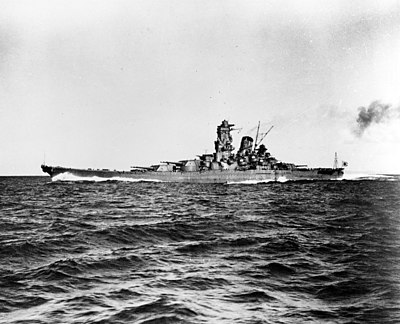
The Targeting Problem – Development of Fire Control Systems
When gunnery ranges increased dramatically in the late 19th century, the problem of accurately and consistently hitting the target was one of the greatest concerns of the commanders at sea. The calculation of the proper aiming point is a complex problem. This is because both the ship firing the gun and the target are moving with respect to each other; the ship firing its gun is not a stable platform due to wave action causing it to roll, pitch, and yaw and there is a need to take into account both internal ballistics (wear of the barrel due to rounds fired) and external ballistics (temperature, wind, air pressure on projectile motion during its flight in the air). This issue of directing long-range gunfire came into sharp focus during World War I in the Battle of Jutland, when only 3% of their shots actually struck their targets, due to the use of a manual fire control system.
By this time, advances in computing technology led to the development of mechanical calculators, which were adapted to solve this vexing problem. Sophisticated mechanical calculators were developed to compute proper gun laying values. The earliest mechanical naval fire control systems were developed around the time of World War I independently by Arthur Pollen and Frederic Charles Dreyer. The gunnery action now involved various spotters to measure distance and bearing of target and then relay this data to a central plotting station in the ship. The fire direction teams fed in the location, speed and direction of the ship and its target, as well as various adjustments for Coriolis Effect, weather effects on the air, and other adjustments to compute the firing solution, which would be relayed to the turrets for laying. A feedback system was incorporated to correct for missed rounds. The addition of director control high up in the ship allowed operators to have a superior view over any gun layer in the turrets and helped to improve co-ordination and aiming. The introduction of larger optical rangefinders further improved the estimate of the enemy’s position at the time of firing. The use of Director-controlled firing together with the fire control computer moved the control of the gun laying from the individual turrets to a central position.
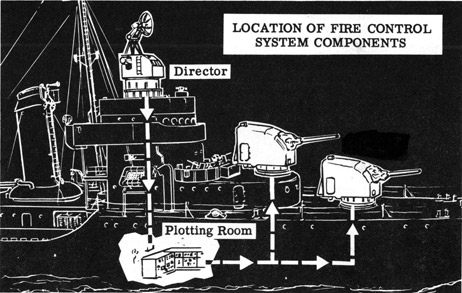
During World War II, further improvements were introduced in the Rangekeepers as technology advanced. Electromechanical computing devices or analogue computers were used to solve the complex problem of calculating gun-laying angles – bearing and elevation, essential for landing shells on the target. The inputs of the target range, bearing and elevation measured (either optically or by means of radar) by the director and the values are transmitted to the Rangekeeper, which also receives inputs from the vertical gyroscope to enable it to perform the complex calculations. The devices became more and more sophisticated with advances in technology and reached its zenith following World War II. The incorporation of optical director with aided tracking devices improved accuracy but it was not until the invention and adaptation of radar into the fire control system, early in World War II, that there were significant improvements in the accuracy of firing, particularly against fast-moving threats. The development of servomechanisms (called “power drives” in the U.S. Navy) allowed the guns to be automatically steered to the Rangekeeper’s commands with no manual intervention.
One of the widely installed systems was an electro-mechanical analogue ballistic computer, the Ford Mark 1 and Mark 1A, which was a component of the Mark 37 Gun Fire Control System, developed by Hannibal Ford of the Ford Instrument Company and remained in service up to 1969. The was possible due to the development of a device called a Selsyn that could transmit and receive electrically the mechanical position of the director as well as transmit output electrically to a gun mount or turret. The other device that was really important was the mechanical rate integrator, which integrated time and position, for the X, Y and Z axes. Integrating time and position together with the other variables finally helped to solve the fire control problem and predict the future position of the target. This gave American forces a technological advantage in World War II against the Japanese. However, all analogue anti-aircraft fire control systems had severe limitations, and even the USN Mk 37 system required nearly 1000 rounds of 5″ mechanical fuze ammunition per kill, even in late 1944. It was only in the mid-1970s that digital computers were adopted for in FCS for weapon systems.

In addition to the Ford Rangekeeper, the stable vertical (vertical gyro), an artificial horizon designed for use at times when the actual horizon could not clearly be discerned was developed, which increased the accuracy of long-range fire by ensuring that the guns of a battleship were fired at the correct point within that ship’s roll. Previously, the visual horizon had been used, but it was not always visible, particularly at night or in conditions of poor visibility. Over time, the capabilities of the stable vertical were improved, and rather than serving as a supplement to the natural horizon, it became the primary indicator of the ship’s inclination for fire control purposes.
The anti-aircraft fire control problem was more complicated because it had the additional requirement of tracking the target in elevation and making target predictions in three dimensions. The setting of fuze time against fast-moving aircraft was a big problem. Two devices developed during the period greatly enhanced the surface ships defences against the air threat. These were the proximity (or VT) fuze and the computer. The VT fuze was a by-product of radar. When built into an explosive shell, a small radar set activated the detonator when it detected the target at a proper distance. This obviated the requirement to compute the correct time of flight and setting of the fuze prior to firing the gun. Use of the VT fuze alone improved antiaircraft gun effectiveness by a factor of five. Computer-aided fire control was the second major improvement in shipboard antiaircraft systems. Charles S. Draper’s invention of the Mark 14 sight, a gyroscopic lead computing 134 device used with a 20-mm. the machine gun was one of the earliest. Although the Mark 14 was very effective, the electronic M-9 was a superior director. When synchronized electrically to move with the director, the guns could be accurately and quickly brought to bear on the target by the director officer. The computer kept track of roll, pitch, and the parallax between guns and director. The computer directed fire control system was eventually coupled with radar, and faster-firing guns.
Despite all the improvements to Fire Control Systems, the performance of guns against aircraft did not get better as aircraft flew faster and were more manoeuvrable. The rounds required to destroy a plane increased sharply for virtually every size of ammunition, as an analysis of the performance various Anti-Aircraft weapons by the US Navy reveals. The document estimates that 7,600-7,800 enemy planes came within shipboard AA range during the 45 months of the war. According to these statistics, 36% of all the enemy planes that came within range of US naval AA were shot down. 9% of all the enemy planes which came within AA range managed to strike a sinking or damaging hit on US ships. The findings of the analysis of guns firing are summarised below :-
The 40 mm gun developed into the most effective light anti-aircraft weapon in the fleet with 742 enemy aircraft kills accounting for roughly half of all Japanese aircraft shot down between 1 October 1944 and 1 February 1945. Its accuracy improved when coupled with electric-hydraulic drives and combined with the Mark 51 Director. The 20 mm, which was the most important weapon during the first 2 years of the war had 617 kills but was passed over by both the 5-inch and 40 mm in the percentage of planes knocked down during 1944 and 1945, 87 for 3″ rounds, 65 for .50 cal, and 48 for other ammo.
Five-inch guns destroyed 30 percent of all “sure kills” during the war. VT-fuzed projectiles accounted for 346 kills while the impact and timed fuzes had 342 kills. VT developed late in the war was used in only 35 percent of 5-inch rounds but were responsible for 50 percent of 5-inch kills.
The indicated performance of the 3″/50, which boasts a lower Rounds Per Kill than even the 5-inch VT, is considered a statistical casualty as a result of poor reporting by ships.
The 6″/47, lacking an AA computer and VT fuzes, was used but rarely against aircraft. It was responsible for two “kills.” Both a computer and VT fuzes have been developed for this weapon.
Disclaimer: The views and opinions expressed by the author do not necessarily reflect the views of the Government of India and Defence Research and Studies
References:
- Hough, R. , The Great War at Sea, 1914-1918 , Oxford University, 1983, pp. 267-268
- The super dreadnoughts were heavier by 2,000-tons in displacement, had the heavier 13.5-inch (343 mm) gun, with all the main armament on the centreline
- https://en.wikipedia.org/wiki/40_cm/45_Type_94_naval_gun
- https://wikimili.com/en/List_of_broadsides_of_major_World_War_II_ships
- The Battle of the Coral Sea, 6-8 May 1942, can be viewed as the first of “modern” fleet versus fleet engagements. Although the opposing fleets were made up of cruisers, destroyers and aircraft carriers, the combat actions were carried out entirely by aeroplanes. Ships of both forces were damaged and sunk, without either ever coming into visual contact with the other.
- Rear Admiral Jesse B. Oldendorf was guarding the southern entrance to the Leyte Gulf at the northern end of Surigao Strait. He commanded a line of six battleships (West Virginia, Tennessee, California, Maryland, Pennsylvania, and Mississippi), flanked by numerous heavy and light cruisers. A smaller Japanese force under Vice Admiral Shoji Nishimura came up the strait, aware of the formidable strength of the American force but nonetheless pressed on. Half of Nishimura’s fleet was eliminated by the Americans’ destroyer torpedoes, but the Japanese admiral continued on with his remaining few ships. Oldendorf’s battleships were arrayed in a line, and they unleashed their radar-directed fire-power upon Japanese vessels, whose return fire was ineffectual due to the lack of radar fire control and earlier battle damage. Nishimura went down with his ship. Despite this, however, Yamashiro’s guns, along with cruiser Mogami managed to severely damage an American destroyer.
- https://en.wikipedia.org/wiki/Rangekeeper. The British fleet’s performance at Jutland has been a subject of much analysis and there were many contributing factors. When compared to the long-range gunnery performance by the US Navy and Kriegsmarine, the British gunnery performance at Jutland is not that poor. In fact, long-range gunnery is notorious for having a low hit percentage. For example, during exercises in 1930 and 1931, US battleships had hit percentages in the 4-6% range.
- Arthur Joseph Hungerford Pollen was a journalist, businessman, and commentator on naval affairs who devised a new computerised fire-control system for use on battleships prior to the First World War. His most important technical innovation was one of the world’s first electrically-powered analogue computers, patented as the Argo Clock: a differential analyser which enabled big guns to engage with long-range targets when both ships were moving at speed in different directions.
- Commander (later Admiral Sir) Frederic Charles Dreyer was an officer of the Royal Navy and served as Jellicoe’s flag captain at Jutland. A gunnery expert, he developed a fire control system for British warships. He retired with the rank of admiral in 1943, having served through two world wars.
- A director, also called an auxiliary predictor, is a mechanical or electronic computer that continuously calculates trigonometric firing solutions for use against a moving target, and transmits targeting data to direct the weapon firing crew.
- A. Ben Clymer (1993). “The Mechanical Analog Computers of Hannibal Ford and William Newell” (pdf). IEEE Annals of the History of Computing
- Singer, C. , el al, A History of Technology , V. 2, Oxford University, 1956 pp. 213-214
- [Ref. 4: pp. 215-216]
- Information Bulletin · No. 29, Antiaircraft Action Summary · World War II October 1945 Issued by Headquarters of the Commander in Chief, United States Fleet

